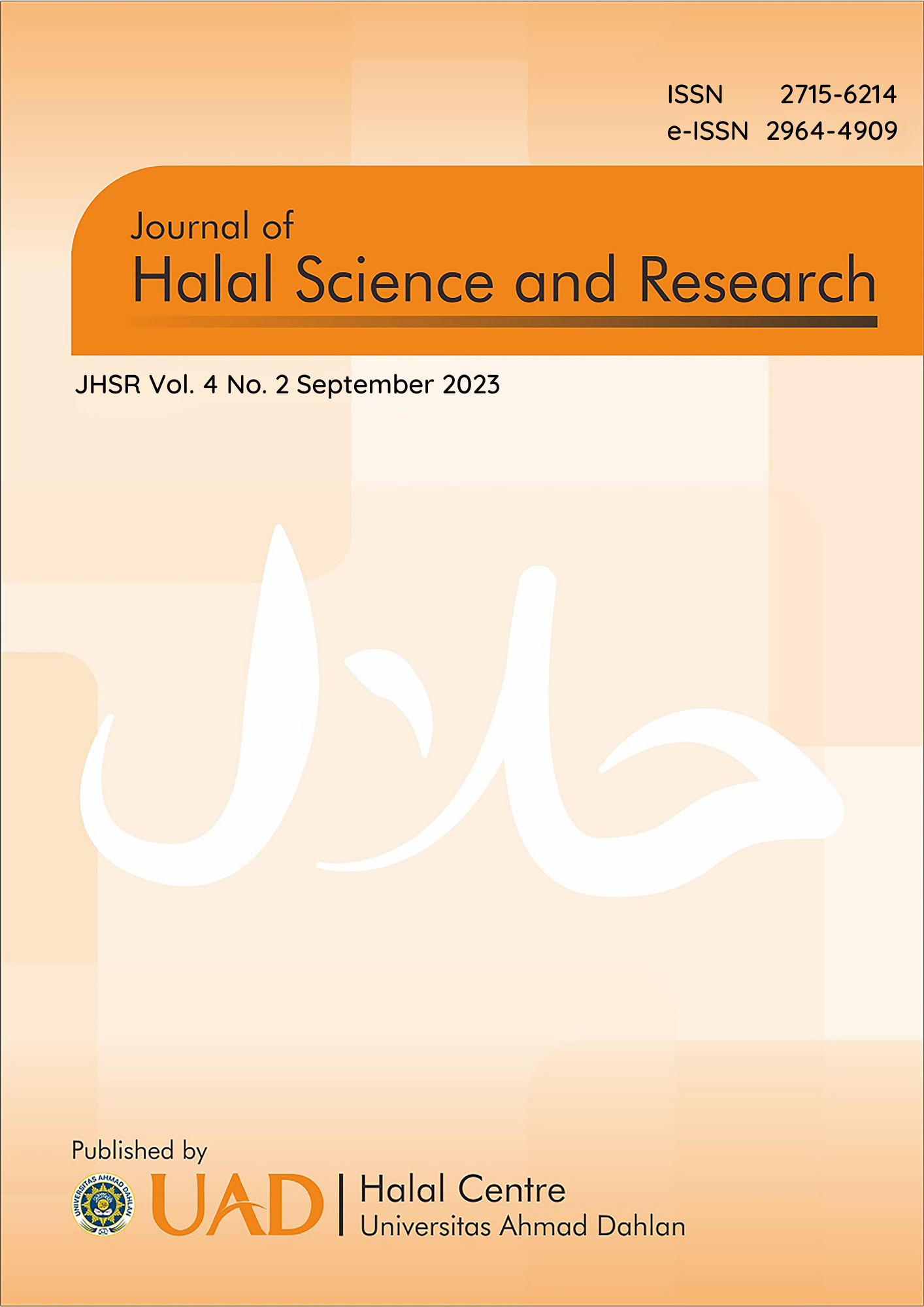Fish-based gelatin: exploring a sustainable and halal alternative
DOI:
https://doi.org/10.12928/jhsr.v4i2.8596Abstract
Gelatin derived from fish has emerged as a promising alternative to traditional gelatin derived from mammals, primarily due to its potential to meet the rising demand for halal-certified products. This article provides a comprehensive overview of the utilization and extraction of gelatin derived from fish as a halal-compliant substitute. This study gathered information regarding the source, extraction method, and contribution to physicochemical properties and applications by reviewing the relevant literature. It discusses the most frequently consumed fish species, such as tilapia, mackerel, and catfish, which are halal and possess outstanding gel-forming properties. Type A gelatine (pre-treated acid) is distinguished from type B gelatine (pre-treated alkaline) based on the solvent used for pre-treatment. Seventy-five percent of the twenty gelatin extraction studies utilized alkaline pre-treatment (i.e., NaOH), where the base solution can eliminate non-collagen from the skin or bone of fish, thereby obtaining pure collagen. All extraction processes are conducted using the hot water extraction method at temperatures ranging from 45 to 70 °C. This method is time-efficient, accelerates collagen decomposition and gelatin solubility, and increases gelatin yield (from 5.33 to 68.75%). The effects of various procedures, including acid and alkaline extraction, on gelatin gel strength, moisture content, ash content, protein content, and fat content are investigated. According to SNI, gelatine has a gel strength between 50 and 300, a moisture content that does not exceed 16%, a lipid content that does not exceed 5%, and an average protein content that does not exceed 87.65%. However, ash concentrations typically persist above 3.25%, presumably due to using bases in pre-treatment processes that do not perfectly dissolve minerals compared to acids. In conclusion, the source and method of extraction will impact the gelatin's characteristics and applications.
Keywords: Gelatin, Fish-based gelatin, Physicochemical properties, Traditional gelatin, SNI
Downloads
Published
Issue
Section
License
Copyright (c) 2023 Universitas Ahmad Dahlan

This work is licensed under a Creative Commons Attribution-NonCommercial-ShareAlike 4.0 International License.
Authors who publish with JHSR (Journal of Halal Science and Research) agree to the following terms:
1. Authors retain the copyright and grant Universitas Ahmad Dahlan right of first publication with the work simultaneously licensed under a Creative Commons Attribution-NonCommercial-ShareAlike 4.0 License (CC BY-NC-SA 4.0) that allows others to share (copy and redistribute the material in any medium or format) and adapt (remix, transform, and build upon the material) the work for any purpose, even commercially with an acknowledgement of the work's authorship and initial publication in Universitas Ahmad Dahlan.
2. Authors are able to enter into separate, additional contractual arrangements for the non-exclusive distribution of the journal's published version of the work (e.g., post it to an institutional repository or publish it in a book), with an acknowledgement of its initial publication in Universitas Ahmad Dahlan.
3. Authors are permitted and encouraged to post their work online (e.g., in institutional repositories or on their website) prior to and during the submission process, as it can lead to productive exchanges, as well as earlier and greater citation of published work (See The Effect of Open Access).

This work is licensed under a Creative Commons Attribution-NonCommercial-ShareAlike 4.0 International License.




